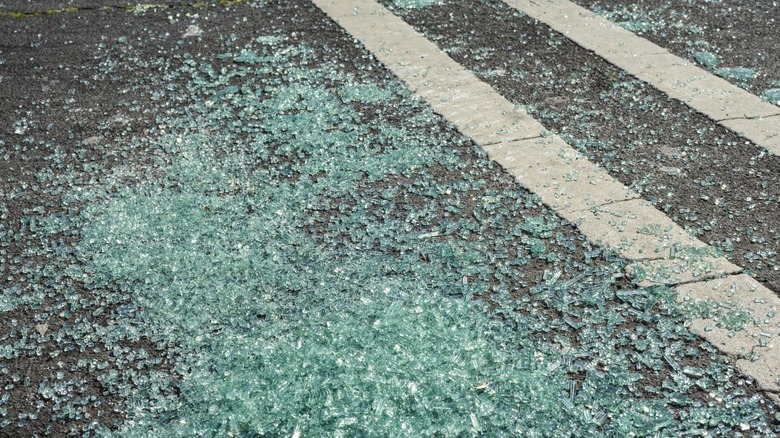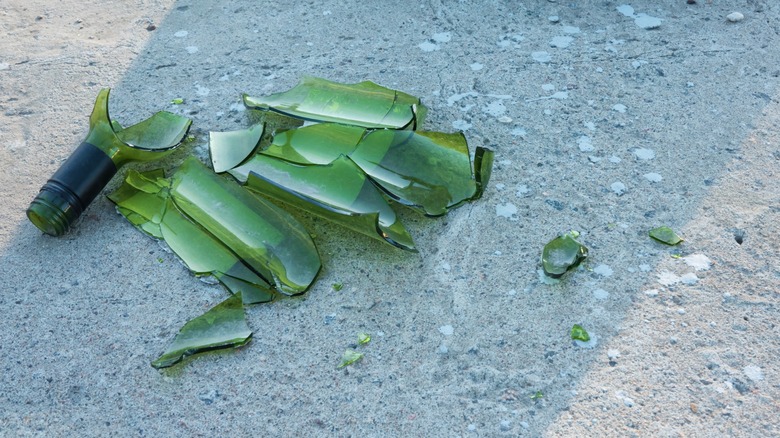Can Driving Over Broken Glass Damage Your Tires?
Road tires are made specifically to last as long as possible on all kinds of terrain. But not all tires are built the same. For instance, an economy tire you might find on a Corolla isn't as robust as one you might see on an F-150, and a touring tire would likely be more durable than a performance tire. This makes it hard to say what exactly could damage a tire because it depends on the type of tire you're using.
If we're talking about broken glass, the general, easy answer is yes, it could damage your tire. Most tires should be able to withstand shards of glass made from annealed glass (the most common type of glass), such as those from beer or soda bottles. These bottles use relatively thin glass that tends to break into small, irregular shards. While most of these pieces just get pressed into the tread without reaching the steel belts underneath, the thin shards can sometimes wedge upright in cracks or gravel. Also, in some cases, bigger chunks of a broken bottle can pose a serious risk depending on how fast you're going.
However, plate glass (thick annealed glass) is still found in some older storefront windows, architectural panels, and furniture pieces. It can be a quarter of an inch thick or more and breaks into large, razor-edged shards. These should be rare in places where cars drive because tempered glass (aka safety glass) has become the standard in high-risk areas. If you did hit an upright shard, it could slice the tread and leave an unpatchable hole — or worse, cut into the relatively unprotected sidewall, causing immediate and irreversible damage. Those are the shards you definitely don't want to risk driving over.
What should you do if you drive over glass?
Now that you know that most encounters with broken glass won't lead to flats, it's still smart to take precautions just in case. If you've driven over a patch of glass, especially something fresh and sharp-looking, don't ignore it. Follow the same procedure you would when you think you have a puncture. Stop somewhere safe and check for any embedded glass pieces, visible cuts, or bulges. Even small punctures can slowly leak air or lead to a blowout later.
If you don't see anything obvious, it's still a good idea to monitor your tire pressure over the next few days. A slow leak from a sneaky shard that worked its way in might not show up right away. Many cars have tire pressure monitoring system (TPMS) sensors that will alert you, but if yours doesn't, use a gauge to check the good old-fashioned way. If you do spot something lodged in the tire, especially in the sidewall, don't try to pull it yourself unless you're prepared to swap the tire or plug it. It's safer to take it to a tire shop and have a pro look at it.

